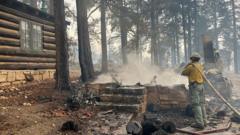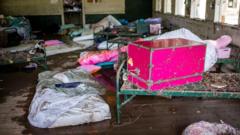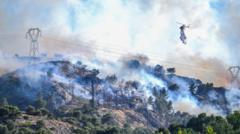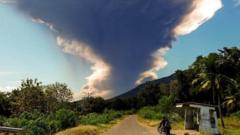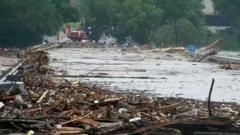**The Grand Canyon Lodge, a cherished landmark and natural retreat, is lost to wildfires, devastating many who held it dear. There's hope for rebuilding, but it will take time.**
**Devastation at the Grand Canyon: Community Grieves Loss of Historic Lodge**
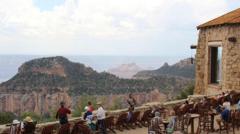
**Devastation at the Grand Canyon: Community Grieves Loss of Historic Lodge**
**Raging Wildfires Claim Grand Canyon Lodge, Leaving Locals and Visitors Heartbroken**
The Grand Canyon Lodge, a treasured spot for visitors and locals alike, has been destroyed in a recent wildfire that swept through the North Rim. Known for its breathtaking views and historical significance, the sudden loss has left a profound mark on the community.
The fire, ignited by a lightning strike, grew uncontrollably after initial containment efforts failed. Davy Crockett, vice-president of the Grand Canyon Historical Society, expressed his heartbreak over the loss. “I was devastated,” he said, summing up the sentiments of many who flocked to social media to share their memories and tributes to the iconic lodge.
The historical facility, located at an elevation of 8,000 feet, was the only accommodation on the North Rim of the Grand Canyon. Visitors treasured it for its stunning panoramic views and tranquil setting. Many described their stays as “a balm for the weary soul,” and the area’s beauty was often likened to a spiritual experience. Tour guide Karne Snickers, who has spent 24 years leading excursions in the area, felt particularly connected to the lodge. “Losing it is like losing an old friend,” she reflected with tears in her eyes.
The fire, known as the Dragon Bravo Fire, has consumed over 5,000 acres and also destroyed numerous cabins and surrounding nature, including trees that were centuries old. Some locals and visitors, who often hiked in the lush landscapes surrounding the lodge, are mourning the loss of significant natural features that contributed to the area's charm.
This incident marks the second time the lodge has succumbed to flames. Originally opened in 1928 and designed by architect Gilbert Stanley Underwood, it tragically burned down four years later due to a kitchen fire. It took years to rebuild during the challenging times of the Great Depression, and the lodge was finally reopened in 1938, becoming a beloved escape for countless visitors.
Despite the devastation, there remains a glimmer of hope among the community. Park officials have not yet confirmed any plans for reconstruction, but many are optimistic. “We have to rebuild this place,” Snickers affirmed. “It’s going to take time, but it needs to come back—it was a part of history.” The Grand Canyon’s draw remains as strong as ever, and those who cherish its heritage are determined that the lodge’s legacy will continue.
The fire, ignited by a lightning strike, grew uncontrollably after initial containment efforts failed. Davy Crockett, vice-president of the Grand Canyon Historical Society, expressed his heartbreak over the loss. “I was devastated,” he said, summing up the sentiments of many who flocked to social media to share their memories and tributes to the iconic lodge.
The historical facility, located at an elevation of 8,000 feet, was the only accommodation on the North Rim of the Grand Canyon. Visitors treasured it for its stunning panoramic views and tranquil setting. Many described their stays as “a balm for the weary soul,” and the area’s beauty was often likened to a spiritual experience. Tour guide Karne Snickers, who has spent 24 years leading excursions in the area, felt particularly connected to the lodge. “Losing it is like losing an old friend,” she reflected with tears in her eyes.
The fire, known as the Dragon Bravo Fire, has consumed over 5,000 acres and also destroyed numerous cabins and surrounding nature, including trees that were centuries old. Some locals and visitors, who often hiked in the lush landscapes surrounding the lodge, are mourning the loss of significant natural features that contributed to the area's charm.
This incident marks the second time the lodge has succumbed to flames. Originally opened in 1928 and designed by architect Gilbert Stanley Underwood, it tragically burned down four years later due to a kitchen fire. It took years to rebuild during the challenging times of the Great Depression, and the lodge was finally reopened in 1938, becoming a beloved escape for countless visitors.
Despite the devastation, there remains a glimmer of hope among the community. Park officials have not yet confirmed any plans for reconstruction, but many are optimistic. “We have to rebuild this place,” Snickers affirmed. “It’s going to take time, but it needs to come back—it was a part of history.” The Grand Canyon’s draw remains as strong as ever, and those who cherish its heritage are determined that the lodge’s legacy will continue.


